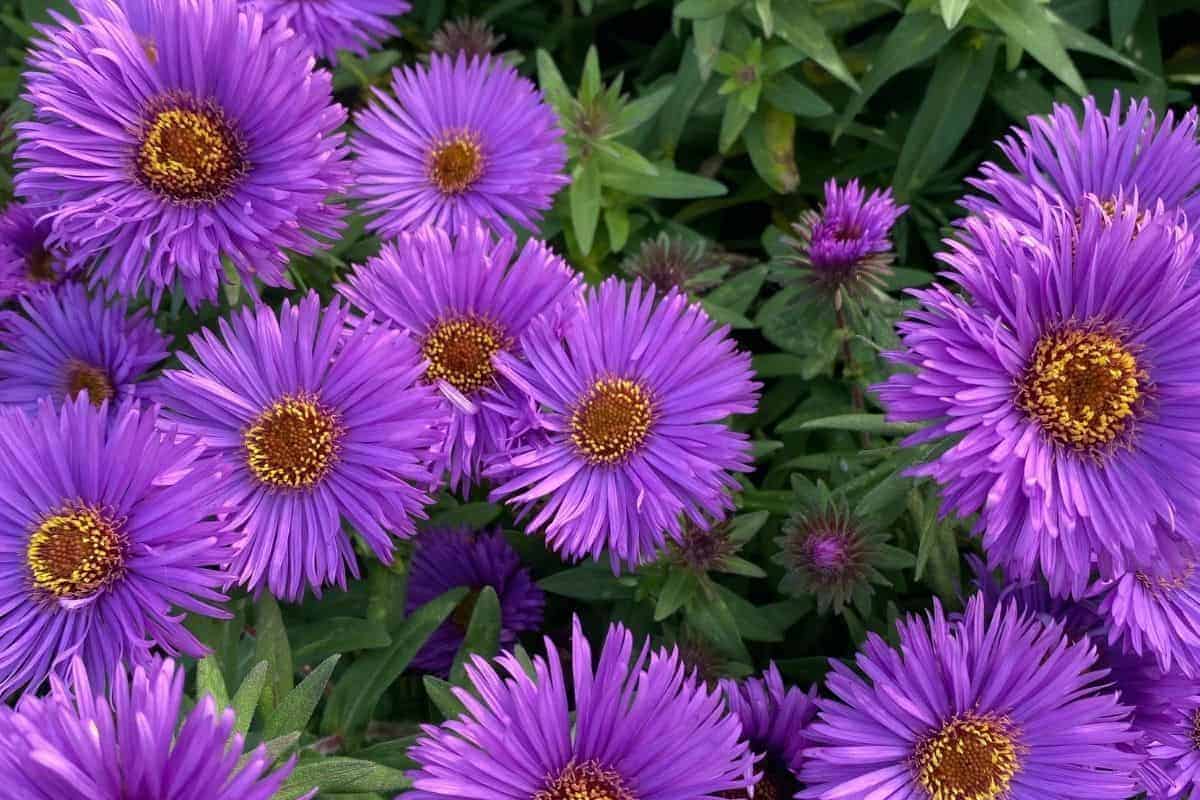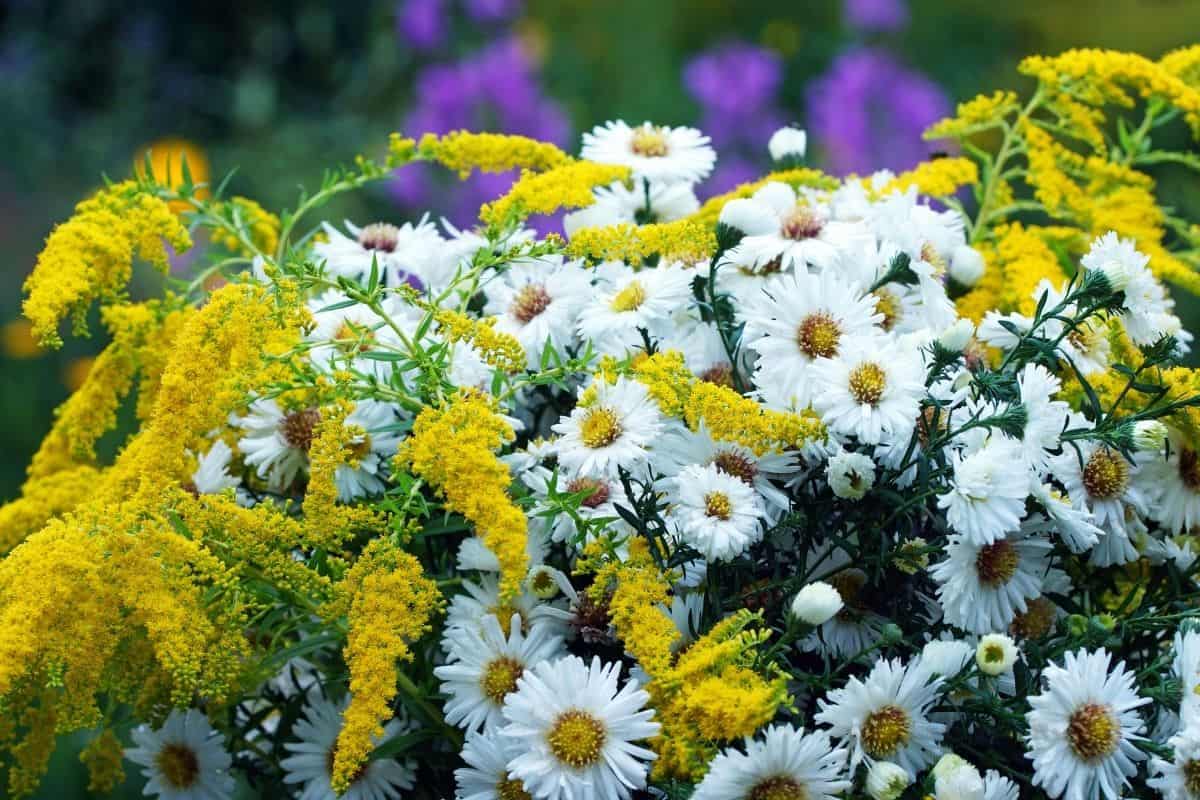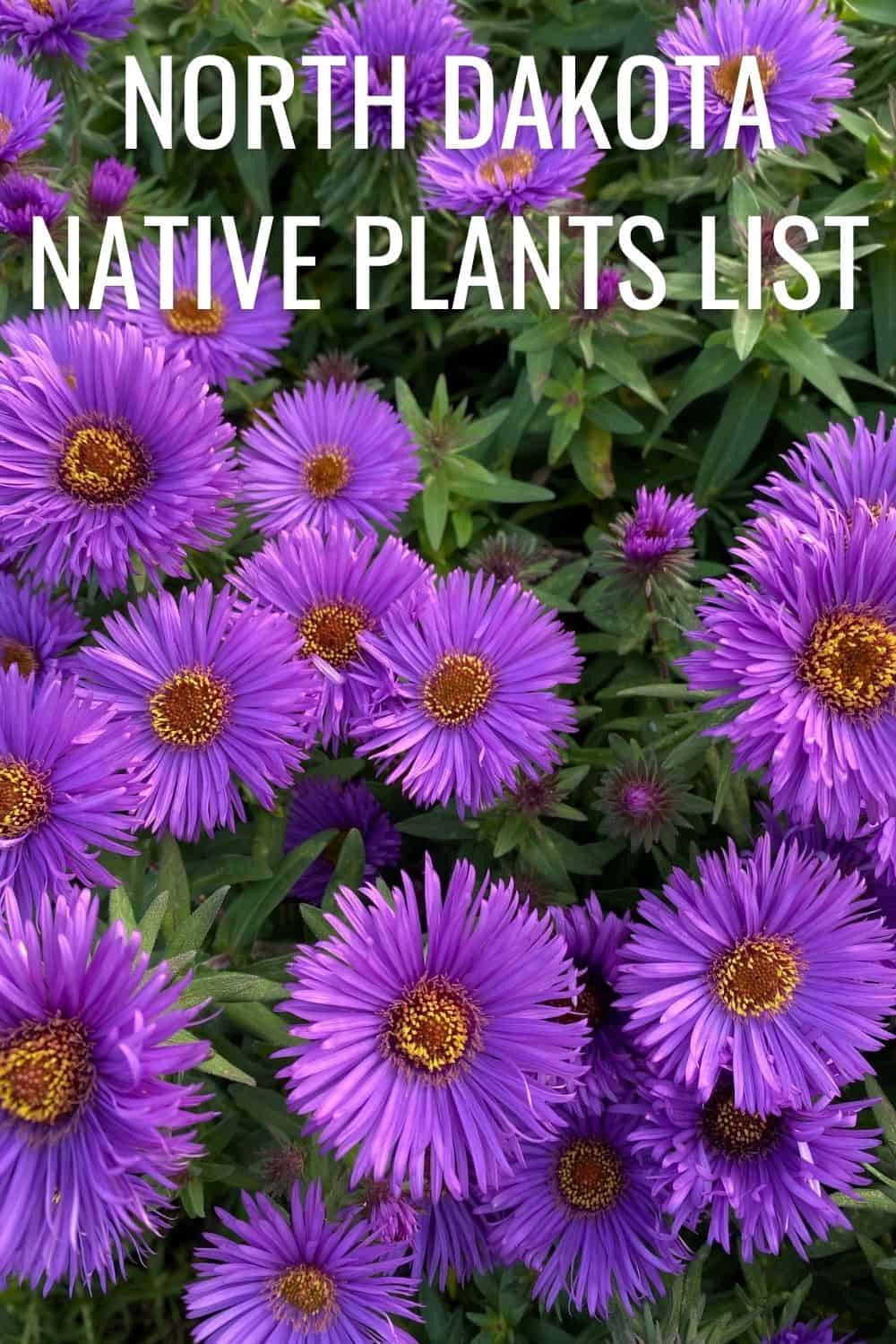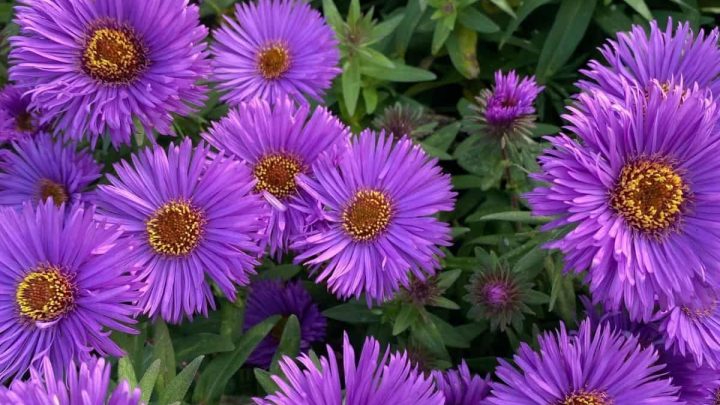North Dakota is a midwestern state of the United States that contains a lot of the Great Plains. It leads the country in the production of wheat, dry edible beans, honey, flaxseed, and canola. While it is a large state, it is the third least populated in the country. There’s a lot of land and a lot of farming.
You can use native plants in your home garden or landscaping once you know how. They will be easier to care for and they have benefits to the local ecosystem as well. We have compiled a North Dakota native plants list to help you learn more about some of these amazing garden plants so that you can use them for yourself.\

North Dakota Climate And Weather
To help you understand the types of native plants that grow here, we’re going to do a quick overview of the weather and climate in North Dakota. This state has a climate that is typical for the continental region. It has cold winters and warm to hot summers. Because it is located in the Upper Midwest, it can have some of the most variety of any state in the country.
It is a state that sees all four seasons and they can have very distinct characteristics. The average annual temp is around 37 degrees in the north and 43 degrees in the south. July is typically the warmest month of the year with temperatures from 67 in the north and 73 in the south.
North Dakota gets an average of 39 inches of snow per year, well above the national average of 28 inches. Winters mean sub-freezing temperatures and lots of snow. Sometimes the winters can be very harsh. Native plants have evolved to adapt to these conditions.
North Dakota Native Plants List
Here are some amazing plant choices for your garden:
1. Fragrant sand verbena (Abronia fragrans)
This flowering perennial has several other common names such as sweet sand verbena, prairie snowball, and heart’s delight. It does best in part sun and will grow from 1 to 3 feet high with a 1-to-3-foot spread. It does best with low water and is overall, very low maintenance. It’s drought-tolerant and works well for rock gardens, meadows, rocky hillsides, and more. This is a great plant for attracting butterflies to your garden.
2. White yarrow (Achillea millefolium)
White yarrow is also known as just common yarrow or as milfoil. It grows from 2-3 feet tall, loves full sun, and blooms in the summer.
White yarrow has a spread of 18-24 inches and loves full sun in average to medium moisture with well-drained soil.
This is another choice that’s great for rock gardens, meadows, prairies, and coastal gardens. It’s deer, rabbit, and drought tolerant and will attract many butterflies.
3. Anise hyssop (Agastache foeniculum)
Anise hyssop is known by many other common names such as fragrant giant hyssop, blue giant hyssop, and lavender hyssop. This perennial thrives in full sun but can also survive in part sun.
It grows from 2-4 feet and blooms in the summer. It has low to average water needs and likes well-drained soil. This is also a good choice for cut flowers. It attracts butterflies and hummingbirds and it’s perfect for flower beds or borders.
4. White snakeroot (Ageratina altissima)
White snakeroot is a good choice for attracting birds and butterflies to your garden. This is a spreading, clumping perennial with flat-topped clusters of small white flowers that provide nectar to bees, butterflies, and moths in summer and fall.
This is a low-maintenance plant that likes partial sun and moist but well-drained soil. They grow 3 to 5 feet tall and have a spread of 2 to 4 feet wide. For best results, space them about 48 inches apart.
5. Prairie onion (Allium stellatum)
Prairie onion is sometimes called autumn onion. It grows 1-2 feet tall and has a spread of about 6 inches to one foot. It likes full sun or partial sun and has low to average water needs. It prefers well-drained sandy or loamy soil.
It has fragrant, showy blooms that attract butterflies and other pollinators. It does really well in flower beds and borders, cottage gardens, and rock gardens. When planted in clusters, it gives a beautiful look to your garden or landscape. This plant will spread by self-seeding.
6. Indigo bush (Amorpha fruticosa)
Inigo bush is a low-maintenance, attractive, blooming shrub that is also known by many other names, including false indigo bush, desert false indigo, and others. It likes full sun and will bloom in late spring and early summer.
It has low water needs and likes moist but well-drained soil. It will do great in wildflower gardens, garden beds, or landscape borders. It doesn’t suffer from any serious pest or disease issues. Butterflies love the indigo bush and will flock to it when the blooms are in season.
7. Meadow anemone (Anemone canadensis)
Meadow anemone is also called round-leaf anemone due to the shape of the leaves. This blooming perennial likes partial sun to shade and grows from 1 to 2 feet tall. It has average to high water needs and likes moist but well-drained soil.
The showy, upward-facing flowers bloom from mid-spring to early summer and bloom at the very top of the stems, facing upward. This also makes a great choice for an attractive ground cover. It’s very low maintenance and easy to care for.
8. Pacific anemone (Anemone multifida)
Pacific anemone is sometimes called early thimbleweed, red windflower, or cut-leaf anemone. This herbaceous perennial forms loose clumps of slender stems with fine, downy leaves. It grows from 6 inches to 2 feet tall, is low maintenance, and prefers partial sun over full sun.
It likes chalky or loamy soil that is moist but well-drained. But the best part about this plant is the stunning blossoms that come in late spring to early summer. They will provide an amazing pop of color in your garden or landscape.
9. False aster (Boltonia asteroides)

False aster is a beautiful flower that loves full sun and will bloom from mid to late summer until fall in your garden. It is sometimes also called botonia, white doll’s daisy, or thousand-flowered aster.
This perennial loves full sun and will grow tall, up to 5-6 feet with a spread of 2-4 feet. It likes well-drained soil and low to average water needs. It makes great cut flowers and looks great in flower beds, gardens, borders, and butterfly gardens.
It has no serious pest or disease issues but can suffer from mildew if it gets too wet or does not have properly draining soil. The white flowers with yellow centers resemble daisies and will draw in a lot of butterflies and pollinators.
10. Arrowleaf balsamroot (Balsamorhiza sagittata)
Here’s another native garden choice that is simply beautiful and is also very low maintenance to care for. This plant is sometimes known by the common names spring sunflower, breadroot, and Oregon sunflower.
The yellow blossoms look like small sunflowers, and they grow in on 1-to-2-foot stems. They do best in full sun and with acidic to neutral, well-drained soil. Once they are established, they are drought tolerant. Birds and rodents will feed on the seeds from this plant.
11. Canadian columbine (Aquilegia canadensis)
Canadian columbine is a stunning flower known by several common names. Eastern red columbine and wild columbine are some of the other names this perennial goes by. It grows about 2-3 feet tall, likes full sun to partial sun, and is very low maintenance.
It looks stunning when it blooms, which is typically late spring to early summer. The red flowers with yellow stamens grow atop the long stems and fern-like foliage and then droop down in a bell-like fashion.
This plant received the Award of Garden Merit from the Royal Horticultural Society. It will attract lots of butterflies and hummingbirds to your garden.
12. New England asters (Aster novae-angliae)
New England asters are stunning flowers that will look amazing in any garden or landscape. This variety is one of the tallest and most spectacular of the asters. It grows from 3-6 feet, has a spread of 2-3 feet, and loves basking in the full sun.
It boasts beautiful, purple-lilac, daisy-like flowers. Butterflies, bees, and other pollinators love it and it’s easy to care for. It blooms from late summer to fall and does great in flower beds, fall borders, butterfly gardens, and more.
You will not be disappointed with this native beauty in your garden.
Next, let’s take a look at some commonly asked questions about native plants in the state of North Dakota.
North Dakota native plants list FAQ
Here are some frequently asked questions about native plants in North Dakota.
Where can I buy native plants for my garden?
There are many local nurseries that will carry native plants for you. Wildflower.org also has a Suppliers Directory that will help you find local businesses that sell native plants or seeds. You can also check local native plant societies, conservation groups, and botanical gardens for more information.
What are some native trees and shrubs for North Dakota?
There are many native trees and shrubs in this state. Some to consider are boxelder, water birch, paper birch, black ash, green ash, limber pine, American elm, juneberry, slippery elm, bigtooth aspen, quaking aspen, big sagebrush, American hazelnut, and pin cherry.














